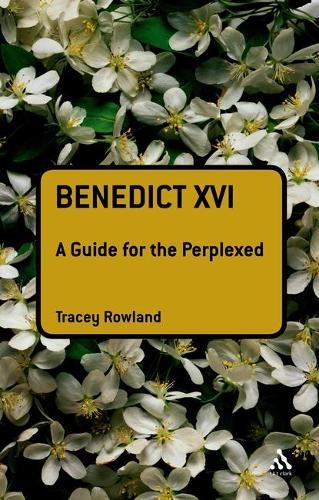Full Product Details
Author: Tracey Rowland (University of Notre Dame, Australia)
Publisher: Bloomsbury Publishing PLC
Imprint: T.& T.Clark Ltd
Dimensions:
Width: 13.80cm
, Height: 1.80cm
, Length: 21.40cm
Weight: 0.286kg
ISBN: 9780567034373
ISBN 10: 0567034372
Pages: 216
Publication Date: 13 May 2010
Audience:
College/higher education
,
Postgraduate, Research & Scholarly
Format: Paperback
Publisher's Status: Active
Availability: Manufactured on demand

We will order this item for you from a manufactured on demand supplier.
Language: English
Reviews
'Tracey Rowland's beautifully composed book is a masterpiece of scholarship and argument. With exceptional clarity, she shows that Pope Benedict's critique of secularism and his defense of traditional Catholicism are grounded in a symphonic synthesis - of Scripture, the living Tradition of the Church, the teachings of its Doctors and Fathers as well as a modern attention to history and culture. His Romantic Orthodoxy is key to a Christian Renaissance and the reunification of the episcopally-based Churches. As Rowland's vivid portrait reveals, Benedict's theological vision makes him one of the most significant pontiffs since the Reformation.' - Adrian Pabst, Lecturer in Politics, University of Kent at Canterbury, UK.
'Tracey Rowland's beautifully composed book is a masterpiece of scholarship and argument. With exceptional clarity, she shows that Pope Benedict's critique of secularism and his defense of traditional Catholicism are grounded in a symphonic synthesis - of Scripture, the living Tradition of the Church, the teachings of its Doctors and Fathers as well as a modern attention to history and culture. His Romantic Orthodoxy is key to a Christian Renaissance and the reunification of the episcopally-based Churches. As Rowland's vivid portrait reveals, Benedict's theological vision makes him one of the most significant pontiffs since the Reformation.' - Adrian Pabst, Lecturer in Politics, University of Kent at Canterbury, UK. --Sanford Lakoff
'Tracey Rowland's beautifully composed book is a masterpiece of scholarship and argument. With exceptional clarity, she shows that Pope Benedict's critique of secularism and his defense of traditional Catholicism are grounded in a symphonic synthesis -- of Scripture, the living Tradition of the Church, the teachings of its Doctors and Fathers as well as a modern attention to history and culture. His Romantic Orthodoxy is key to a Christian Renaissance and the reunification of the episcopally-based Churches. As Rowland's vivid portrait reveals, Benedict's theological vision makes him one of the most significant pontiffs since the Reformation.' - Adrian Pabst, Lecturer in Politics, University of Kent at Canterbury, UK. --Adrian Pabst
Author Information
Tracey Rowland holds the St John Paul II Chair of Theology at the University of Notre Dame, Australia and is a member of the International Theological Commission.



